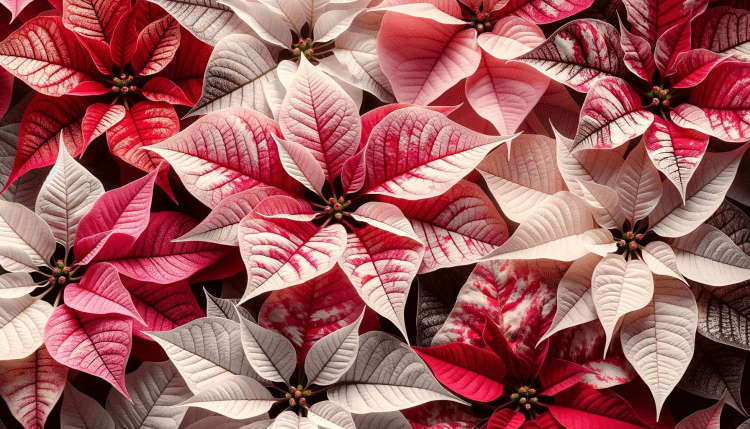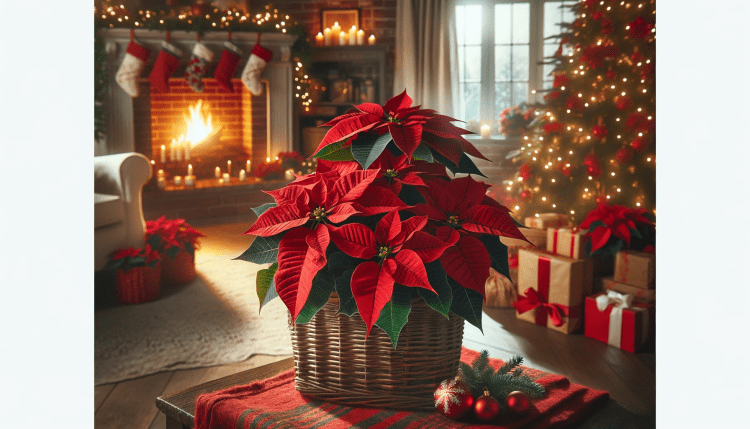
Poinsettias: The Festive Plant of the Holiday Season
Poinsettias, with their vibrant red leaves, are synonymous with the holiday season. These beautiful plants adorn homes and public spaces around the world during winter, adding a splash of color and festive cheer. This blog post delves into everything about poinsettias – from their history and symbolism to care tips and common myths.
History and Origin
Poinsettias (Euphorbia pulcherrima) are native to Central America, particularly in Mexico, where they were used by the Aztecs for decorative and medicinal purposes. The plant was introduced to the United States in the early 19th century by Joel Roberts Poinsett, the first U.S. Ambassador to Mexico, after whom it was named.
Symbolism and Significance
The poinsettia is more than just a pretty plant. It holds significant cultural and symbolic meanings:
- Christmas Symbol: The shape of the poinsettia flower and leaves are sometimes thought as a symbol of the Star of Bethlehem. Its red color represents the blood of Christ, while the white version symbolizes purity.
- Legends: Various legends associate the poinsettia with Christmas, the most popular being a Mexican tale about a poor girl who presents weeds to Jesus on Christmas Eve, which then miraculously turn into red poinsettias.
The Plant’s Anatomy
Understanding the anatomy of the poinsettia helps in its care and appreciation:
- Bracts vs. Flowers: The bright red ‘flowers’ of poinsettias are actually modified leaves called bracts. The actual flowers are the small yellow buds in the center of the bracts.
- Varieties: While red is the most popular color, poinsettias come in a variety of colors such as white, pink, yellow, and marbled patterns.
Caring for Poinsettias
Proper care is essential to keep poinsettias looking their best:
- Light: Poinsettias require bright, indirect sunlight.
- Water: They should be watered when the surface of the soil feels dry to the touch. Overwatering or poor drainage can be detrimental.
- Temperature: They prefer temperatures between 65-70 degrees Fahrenheit and should be kept away from cold drafts or extreme heat sources.
Common Myths and Misconceptions
There are several myths surrounding poinsettias, particularly regarding their toxicity. While they are not edible and can cause discomfort if ingested, they are not deadly as often believed. It’s still advisable to keep them out of reach of pets and small children.
Poinsettias and Pets
Poinsettias (Euphorbia pulcherrima) are often mentioned in discussions about plants that are potentially toxic to pets and animals. However, they are generally considered to be only mildly toxic. The milky white sap found in the plant’s leaves and stems contains chemicals known as diterpenoid euphorbol esters and saponin-like detergents.
If ingested by pets, poinsettias can cause mild irritation to the mouth and stomach, sometimes leading to vomiting or diarrhea. In most cases, the discomfort would be minor and self-limiting. Similarly, if the sap gets on the skin, it might cause irritation and redness, especially for those with sensitive skin or latex allergies.
While serious complications from poinsettia ingestion are rare, it is still a good practice to keep these plants out of reach of pets and animals, and monitor them to prevent any potential nibbling. If you suspect your pet has ingested a significant amount of poinsettia plant or is showing severe symptoms, it’s always best to consult a veterinarian promptly.

Poinsettias After the Holidays
With proper care, poinsettias can retain their beauty long after the holiday season:
- Post-Holiday Care: After the holiday season, continue to care for your poinsettia as a houseplant.
- Reblooming: With specific light and care conditions, it’s possible to encourage poinsettias to rebloom the following season.
Encouraging Poinsettias to Rebloom
Getting a poinsettia to rebloom the following year can be a rewarding challenge:
- After the Holidays: Once the bracts fade, reduce watering and keep the plant in a cooler (about 60 degrees Fahrenheit) but well-lit location.
- Spring and Summer Care: In late spring, cut back the stems to about 4 inches and repot in fresh soil. Begin watering regularly and move the plant outside if temperatures allow, placing it in indirect light.
- Late Summer Pruning: In late summer, prune the plant again to encourage bushiness, and bring it back indoors before nighttime temperatures drop below 60 degrees Fahrenheit.
- The Critical Light Phase: Starting in October, for 8-10 weeks, the plant requires 14 hours of complete darkness each night. Place it in a dark closet or cover with a box from early evening until morning. Then, provide 6-8 hours of bright daylight.
- Return to Regular Light: After this period, return to regular light conditions and watch for the bracts to color up in time for the holiday season.

Poinsettias in Holiday Traditions and Decorations
Poinsettias have become an integral part of holiday traditions and decorations:
- Christmas Displays: They are widely used in Christmas floral displays, church decorations, and as part of festive table settings.
- Gifts: Poinsettias are popular gifts during the holiday season, often given to hosts at holiday parties or as gestures of goodwill.
- Cultural Celebrations: In Mexican culture, the poinsettia is part of Christmas Eve celebrations, where it is known as ‘Noche Buena,’ translating to ‘Good Night’ or Christmas Eve.
Varieties and Breeding Innovations
Over the years, plant breeders have developed a wide array of poinsettia varieties:
- Color Varieties: Besides the traditional red, there are pink, white, lemon, and even bi-colored and speckled varieties.
- Shape Varieties: Some cultivars have been bred for unique bract shapes, such as curled or rounded bracts.
- Commercial Breeding: The aim is often to produce varieties that are more durable, longer-lasting, and suited to a range of climates and indoor conditions.
Environmental Impact and Sustainability
As with any commercially grown plant, sustainability and environmental impact are considerations:
- Growing Practices: The cultivation of poinsettias has evolved with a focus on reducing chemical use and improving energy efficiency in greenhouses.
- Economic Importance: Poinsettias contribute significantly to the horticultural economy, particularly in regions where they are grown on a large scale.
Poinsettias are more than just a festive decoration. They are plants rich in history, variety, and cultural significance. With proper care, these vibrant plants can be enjoyed during the holiday season and beyond, bringing a splash of color and a piece of botanical wonder into our homes. Understanding the full scope of poinsettias, from their care to their role in holiday traditions, allows us to appreciate these festive plants even more deeply.




